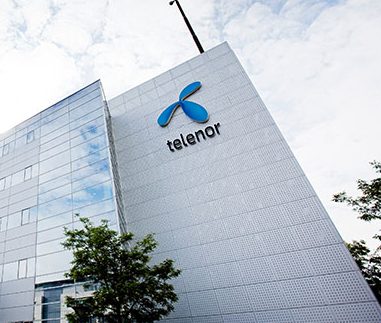Listen to the article
Nordic nations face a new era of security challenges that demand unified action, according to Telenor’s latest annual security report. The telecommunications giant is urging governments and industries across the region to adopt a more coordinated approach to counter increasingly sophisticated threats to critical infrastructure and services.
The report paints a concerning picture of a complex threat landscape where crises can rapidly escalate across sectors and national borders, putting the region’s digital foundations at risk.
“We are facing a security situation where a crisis can start anywhere and spread everywhere – across sectors, countries and regions,” said Benedicte Schilbred Fasmer, President and CEO of Telenor. “The strength of the Nordic model lies in trust, close cooperation, and robust digital infrastructure. But to remain resilient, we must connect these strengths across borders.”
Telenor, a major telecommunications provider across the Nordic region, has identified six primary threat categories that will shape the security landscape in 2025: destructive cyberattacks, sabotage of physical and digital infrastructure, foreign influence operations and disinformation campaigns, intelligence operations targeting critical infrastructure, organized digital financial crime, and advanced online fraud.
These threats aren’t theoretical concerns for the future but present challenges that telecommunications operators and critical infrastructure providers must address daily, according to Fasmer.
The report highlights how the nature of security risks is evolving in several key ways. Hybrid threats—combining cyberattacks, physical sabotage, and disinformation—are becoming increasingly common, making it difficult to distinguish between accidents and deliberate attacks. This blurring creates challenges for response teams and security professionals.
Critical infrastructure has also emerged as a strategic battleground. Subsea communications cables, mobile networks, and cloud infrastructure now underpin everything from national defense systems to economic stability, making them prime targets for malicious actors.
Recent events have demonstrated the fragility of interconnected systems. Telenor points to Storm Amy as a real-world example of how weather-related disruptions can rapidly cascade when power supplies are compromised, affecting communication networks and other essential services.
Data sovereignty is another pressing concern identified in the report. Questions about where data is stored and who governs it are driving governments and organizations to invest in regionally controlled cloud solutions for sensitive information, balancing security needs with operational requirements.
Sigvart Voss Eriksen, Executive Vice President and Head of Telenor Nordics, emphasized that building resilience requires sustained effort and investment. “It requires long-term investment, preparedness and coordination between governments and industry,” he noted. “The Nordic countries already have strong national security and preparedness systems, but a crisis doesn’t care about borders. To protect our critical functions, we must act as a region.”
The report concludes with a five-point call to action for Nordic governments and industry stakeholders. These recommendations include making resilience a shared regional priority, aligning regulatory frameworks across borders, strengthening cross-border information sharing, building redundancy into critical infrastructure systems, and conducting joint exercises to test regional preparedness.
The timing of this report is significant as Nordic countries continue to strengthen their security posture amid growing geopolitical tensions in the region. Finland and Sweden’s recent NATO membership applications reflect the changing security calculus, while increased incidents of subsea cable disruptions have raised concerns about vulnerable infrastructure.
As digital and physical systems become increasingly intertwined, the report underscores that traditional approaches to security—focusing on individual sectors or national boundaries—may no longer be sufficient to address the complex, interconnected threats facing the Nordic region today.
Verify This Yourself
Use these professional tools to fact-check and investigate claims independently
Reverse Image Search
Check if this image has been used elsewhere or in different contexts
Ask Our AI About This Claim
Get instant answers with web-powered AI analysis
Related Fact-Checks
See what other fact-checkers have said about similar claims
Want More Verification Tools?
Access our full suite of professional disinformation monitoring and investigation tools




10 Comments
As a major telecom provider, Telenor is well-positioned to offer insights on the evolving cybersecurity landscape in the Nordics. Their call for more coordinated action is timely and warranted.
Agreed. Harnessing the strengths of the Nordic model, like trust and cooperation, will be key to developing robust defenses against these complex, fast-moving threats.
The report on rising cyberthreats in the Nordic region is concerning. Coordinated action across governments and industries will be critical to safeguard critical infrastructure and services.
Absolutely. Sophisticated disinformation campaigns and digital sabotage pose serious risks that require robust and collaborative security measures.
Disinformation campaigns pose a serious challenge, potentially undermining public trust and social cohesion. Vigilance and fact-based communication will be crucial to counter this threat.
The warning about crises rapidly escalating across borders and sectors is a sobering reminder of the interconnected nature of modern security threats. A unified, cross-border approach seems essential.
The report highlights the need for the Nordic nations to stay ahead of the curve on emerging security risks. Proactive, collaborative measures seem essential to safeguard the region’s digital future.
Absolutely. Maintaining the Nordic model’s resilience in the face of evolving cyberthreats will require sustained efforts and coordination across the region.
Interesting to see the six key threat categories identified by Telenor, from destructive cyberattacks to foreign influence ops. Strengthening digital resilience will be a major challenge.
You’re right. Securing the region’s trusted digital foundations against this diverse threat landscape is crucial for the Nordic model to remain resilient.